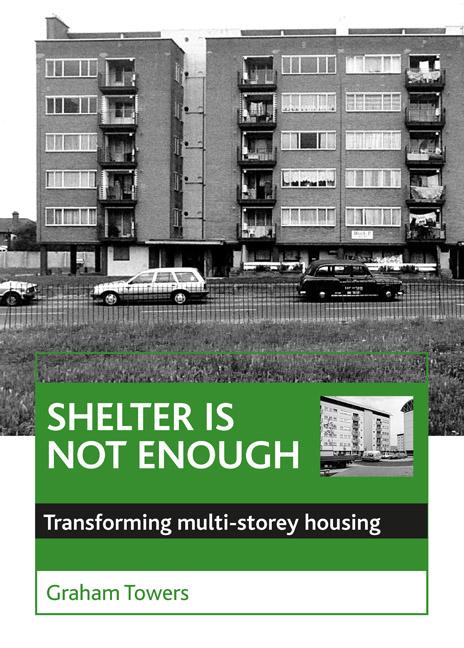Book contents
- Frontmatter
- Contents
- List of figures and tables
- Dedication
- Preface
- Foreword
- one Introduction
- two Forming the multi-storey legacy
- three Politics, economics and housing form
- four Social stigma and community action
- five Redeeming the estates
- six Facets of regeneration
- seven Building a model framework
- eight Prospects for transformation
- nine Ending the estate syndrome
- ten On broader horizons ...
- Bibliography
- Appendix: Case study research
- Index
eight - Prospects for transformation
Published online by Cambridge University Press: 05 July 2022
- Frontmatter
- Contents
- List of figures and tables
- Dedication
- Preface
- Foreword
- one Introduction
- two Forming the multi-storey legacy
- three Politics, economics and housing form
- four Social stigma and community action
- five Redeeming the estates
- six Facets of regeneration
- seven Building a model framework
- eight Prospects for transformation
- nine Ending the estate syndrome
- ten On broader horizons ...
- Bibliography
- Appendix: Case study research
- Index
Summary
The lessons drawn from past practice made it possible to define a model framework for regeneration – one which requires a multi-faceted, holistic approach. The components of the model are a set of principles which could probably be successfully applied to the regeneration of any housing estate. Obviously, however, estates differ in their physical form. The contrast between low-rise ‘cottage estates’ and multi-storey housing is self-evident and many of the elements of successful regeneration schemes would need to take account of these physical differences. Within the sphere of multi-storey housing there are several different basic types, each of which presents different problems and opportunities for transformation.
The oldest types of multi-storey housing are the four- and five-storey walk-up blocks – ‘tenement’-type estates. There is good evidence that such blocks can be successfully transformed to make good quality housing. Tower blocks are the most distinctive form of multi-storey housing. For these blocks, too, despite their poor reputation, there are many effective schemes which show they can be successfully adapted and improved. For other types of multistorey housing the evidence is less clear. Deck access estates, where blocks are linked together by a network of pedestrian walkways, present seemingly intractable problems. Slab blocks are another area of uncertainty, particularly where they are linked together to form extensive chains of multi-storey housing. The issues surrounding the regeneration of such estates are complex. They need more detailed investigation and careful consideration.
Tenements and tower blocks
It is evident from Islington's Estate Action programme and other projects that ‘tenement-type’ estates can be successfully modernised (see Exemplars 1 and 2, pp 96-7). Most tenement blocks were built between the wars or in the late 1940s. Many have now become unpopular and regarded as poor housing, but this is largely due to low space standards, poor services and disrepair. With sufficient investment these shortcomings can be remedied relatively easily. More importantly, the form of the blocks mean they can readily be adapted. Ground and first floor flats can be combined vertically so that maisonettes can be provided for families with private gardens and their own separate entrances. The upper floors can be replanned to make small flats for households without children. Four-storey blocks generally have staircase access so that each entrance serves only a few flats and can easily be secured.
- Type
- Chapter
- Information
- Shelter Is Not EnoughTransforming Multi-Storey Housing, pp. 155 - 184Publisher: Bristol University PressPrint publication year: 2000



